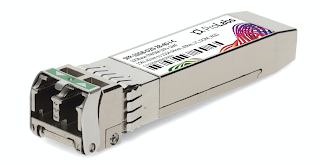One year after introducing its 8000 Series routers, Cisco confirmed that Deutsche Telekom (DT) has now deployed the new platforms, which feature Cisco Silicon One Q200 series chips, to boost its network performance and reach – now supporting 246M mobile customers, more than 27 million fixed-network lines and 22 million broadband lines.
Deutsche Telekom worked closely with Cisco to move from redesign to full provisioning in under four months
The companies also note that the deployment helps DT make a significant contribution towards achieving its CO2 neutralization goals. The Cisco 8000 series routers reduce power consumption by up to 92% per 100 Gbps compared to the previous Cisco CRS-X multi-chassis system.
“Providing our customers with fast, reliable broadband to stay connected to the people and things that matter most is our top priority,” said Walter Goldenits, CTO of Telekom Deutschland GmbH. “The cooperation with Cisco provides us with a secure and stable network with supreme availability and security which benefits our customers.”
“We have seen the world transform over the last year and a half and the internet had to transform with it,” said Jonathan Davidson, Executive Vice President and General Manager, Mass-Scale Infrastructure Group, Cisco. “Working together with leading service providers like Deutsche Telekom, we are showcasing how the latest in networking, routing and silicon technology can deliver the internet experience we need to stay connected – and bring more people online.”
https://newsroom.cisco.com/press-release-content?type=webcontent&articleId=2203691
Cisco unveils Routed Optical Networking
Cisco announced a number of Internet infrastructure products and technologies including a new Routed Optical Networking solution featuring Acacia pluggable optics and Cisco’s full mass-scale routing portfolio. The company claims its integration of routing and optics will lead to savings of up to 46% over traditional, layered IP + optical product architecture.
At its virtual Cisco Live! event, the company said Acacia’s pluggable coherent optics, advancements in Segment Routing and Ethernet VPN, and new Cisco Crosswork Cloud capabilities will lead to greater efficiency for service providers and web scale companies such as Airtel, Altibox, Eolo, Facebook, Google Cloud, Rakuten Mobile, SFR, Telenor, Telia Carrier, Telstra, Websprix, etc.
Here are some highlights of the announcements
Cisco Silicon One - Cisco first introduced its programmable networking silicon architecture in 2019. The company has now expanded the Cisco Silicon One platform from a routing-focused solution to one which also addresses the web-scale switching market, offering ten networking chips (devices) ranging from 3.2 Tbps to 25.6 Tbps.
Subscriber Management - Cisco is introducing its new Cisco Cloud Native Broadband Network Gateway for telco customers (wireline), joining the Cisco family of existing cloud native broadband routers for cable and mobile. It paves the way for convergence to a unified subscriber management solution, bringing further simplification and efficiency while enabling service providers to offer truly access-agnostic services independent from where people use these services.Routing for the Access, Aggregation, Edge, and Core
- Cisco’s latest 8000 family of routers now features Cisco Silicon One Q200 series chips offering up to 14.4 Tbps total capacity, enabling 32 and 64 x 100G web-scale switches.
- Introducing powerful new line cards and chassis for the Cisco Aggregated Service Router (ASR) 9000 series and Network Convergence System (NCS) 500 and 5500 series routers providing increased capacity with capital and operational cost savings
- New Crosswork Network Controller (CNC) features help customers operate the Cisco Routed Optical Networking solution
Cisco Crosswork Cloud - new application called Traffic Analysis offers a comprehensive view across network peering points. With this insight
Cisco Business Critical Services - design and consulting services to help customers adopt Cisco's Routed Optical Networking and Cloud Native Broadband solutions.
Cisco boosts high-performance SD-WAN with Catalyst 8000 Series






















